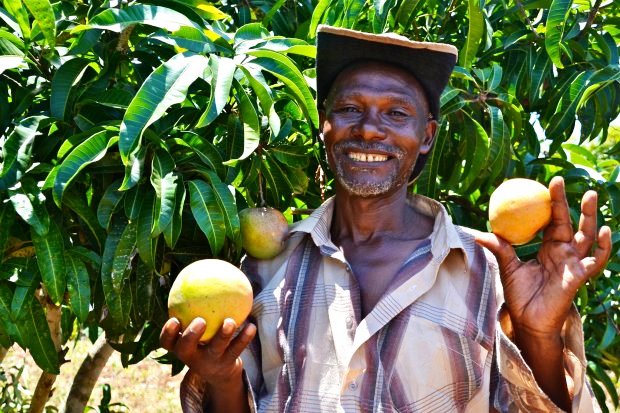
To counter losses in rotting of mangoes due to competition and oversupply during harvest, Kilifi County farmer Juma Mwaringa has moved into drying and packaging the fruit into crisps using solar and wind power.
The farmer uses the hybrid wind and solar power machines to dry chopped crisps. The drier, which has turbines and solar panels can day and night provided there is wind. Solar panels mainly tap the energy during the daytime.
Global United Nations agency, Food and Agriculture organsiation , says 40 per cent of the total production annually goes to waste or is lost. Kenya produces about 50,000 tons annually, of which about 45 per cent is lost in waste or rotting, according to the horticultural department.
This majorly happens when the local and international market are saturated.
Mwaringa adopted the drying of the mangoes to extend their shelf-life from less than a week to about three months or more.
“When the mangoes are in plenty, the cost drops from about Sh30 to Sh10 for each mature fruit. But with this machine, I am not worried about going bad. I no longer struggle to sell fresh mangoes along the Mombasa Malindi Road as before because the dry ones fetch more,” he said.
Mwaringa sells a packet of 250g at an average of Sh150. About 90 per cent of the fruit is water, while the rest is flesh.
On average, one fresh mango can shrink to about 170g when dry. The same mango could have earned a maximum of Sh30 in retail in towns like Nairobi yet it needs a small top-up to earn more than four times.
Packaging materials cost Sh5. Sealing of the polythene bags is done by folding and passing the edge near a flame of fire.
Mwaringa chops the flesh into discs of about five centimeters wide in the solar-panel powered gadget to quicken the water loss process.
Besides the slowed loss rate, the farmer extends the shelf-life of the mangoes to more than three months.
“I rely on roadside vending. Sometimes I visit Watamu Beach wherever I know there are many people there,” Mwaringa said.
The drier uses wind power in the absence of the sun. That means the turbines can run even at night if there is wind to generate the required heat to expel the moisture.
It takes about two days to dry 10 kilos of the mangoes.
Other farm produce can also be dried using the chamber.